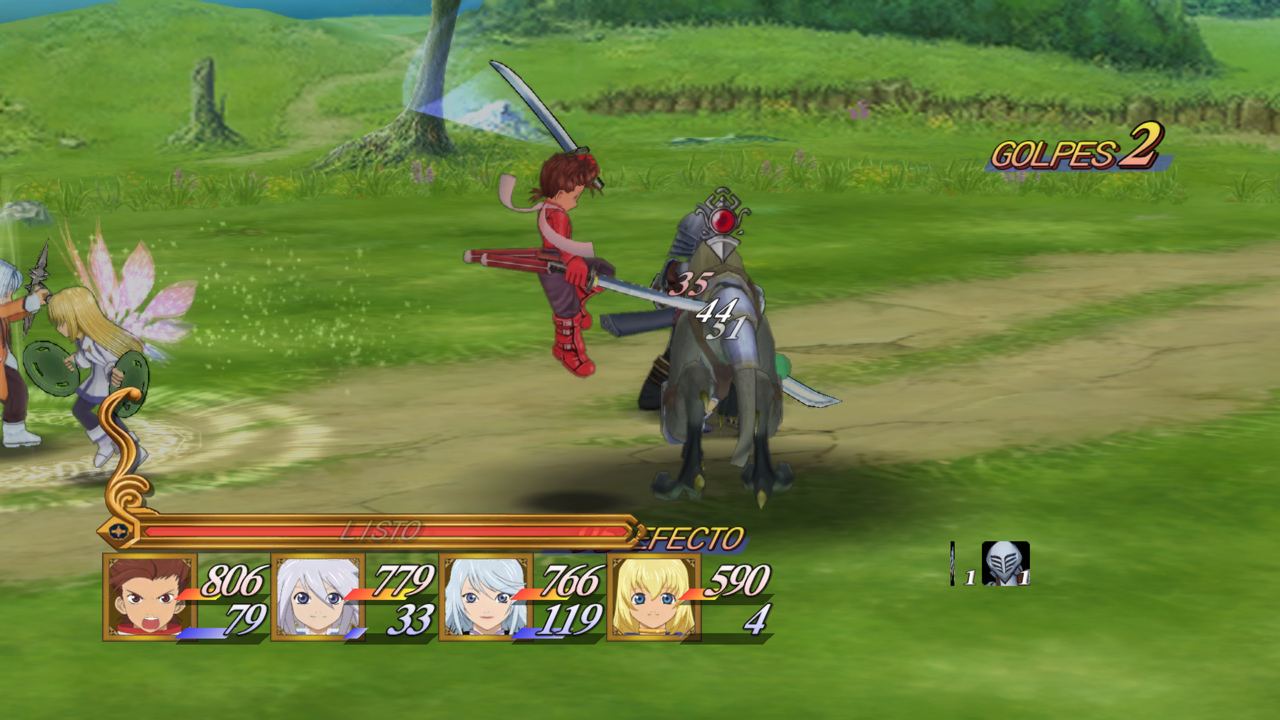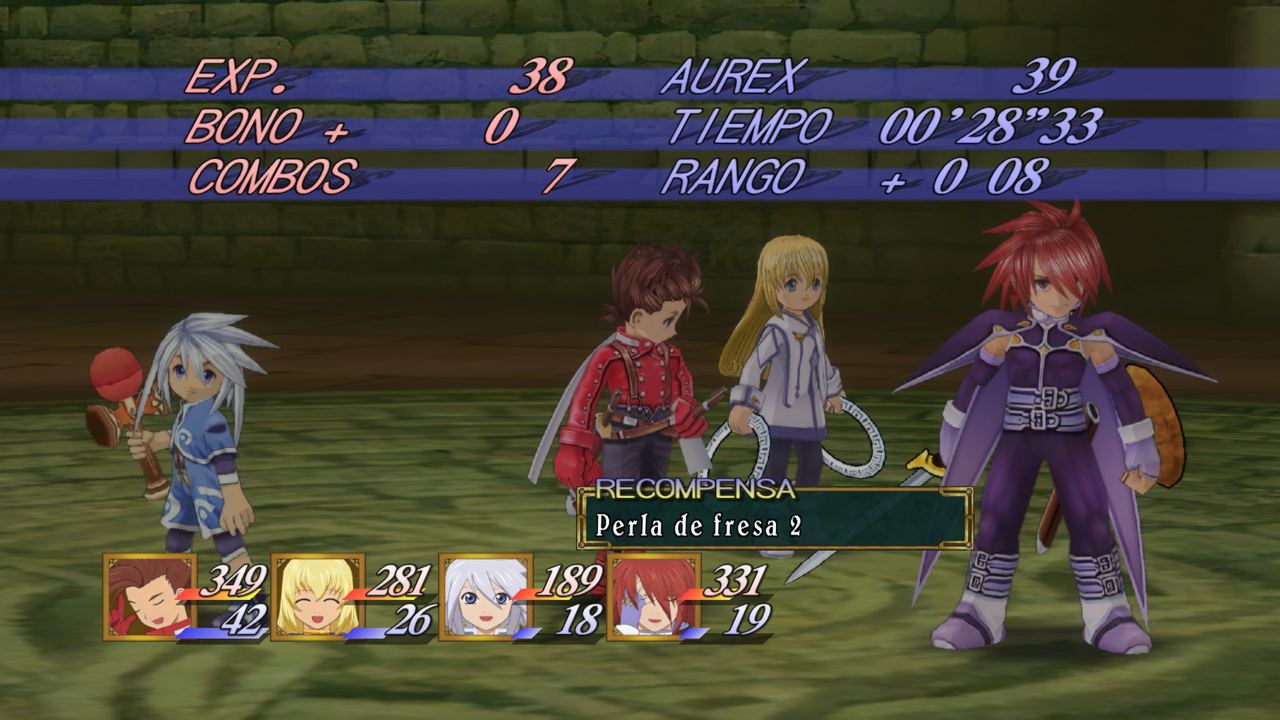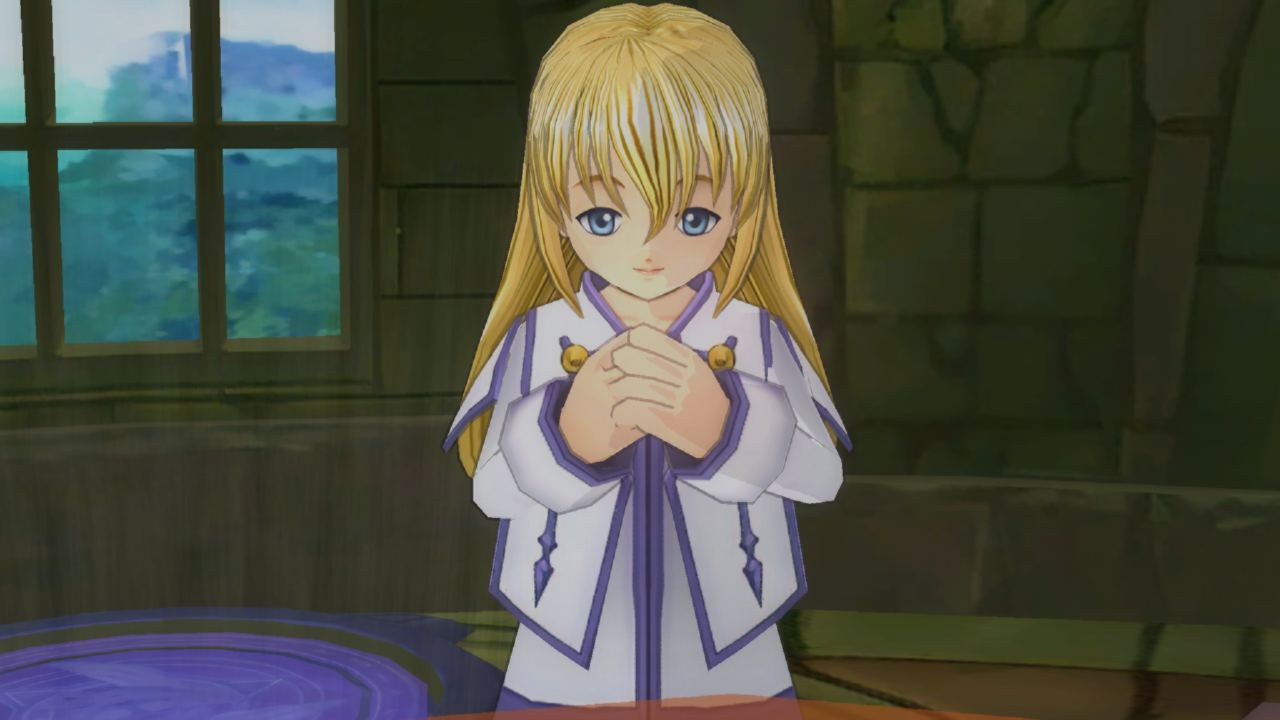There are games worth revisiting from time to time. They even deserve to be remastered or given a good remake. And important dates are usually a good time for them. And that’s exactly what Bandai Namco did with Tales of Symphonia Remastered. Taking advantage of its twentieth anniversary (although it arrived in Europe in 2004), the company delighted us with the remastered version of the Gamecube title.
The game, which is available on Xbox One, Nintendo Switch and PS4, does not have its own version for next-gen consoles, although it can be played on Xbox Series X | S thanks to the backwards compatibility system. This is perhaps one of the first drawbacks that we can find in the title which, as we will continue, are not uncommon. Especially in its technical section, which receives the good news, even losing some points compared to the original.
For those of you who don’t know, in Tales of Symphonia Remastered we follow in the footsteps of Lloyd, a young swordsman who wants to follow and protect his childhood friend Colette, on his way to becoming the chosen one who will regenerate the world. On their journey they will face the Desians and more than one mystery as they travel through a unique world and recruit various allies.
Subscribe to the GX channel on Youtube
technical part
As we mentioned a few lines above, Tales of Symphonia Remastered has a rather poor technical section. Especially for the treatment he received. Yes, we know it’s not a remake, but there are some decisions that don’t make a lot of sense or, at least to us, seem so. For example, the game runs at 30 fps, which in itself wouldn’t have to be bad if it weren’t for the fact that the original from twenty years ago ran at 60 fps. What happened? Yes, graphically it may look better, but the consoles it was released on should be able to play the game perfectly at the same frame rate.
Speaking of graphics, it runs at 1080p at all times. In terms of performance, beyond the aforementioned drop, the game remains solid and we did not find any bugs or problems in our gaming sessions on Xbox Series X, a console on which we played it thanks to the backwards compatibility system. from Microsoft. Also, loading times are very light, just a second or two.
As for the design, we found little new compared to the original, something expected in the case of a remaster. The drawings of the main characters are quite good, very cartoonish, but effective. Like the different enemies and monsters that we find throughout our games. Of course, the general feeling we have is that different scaling filters were used for this adaptation. With this, the feeling that we are left with is as if they were “stretched”. Something that in general is not noticeable, but if we look we will see this effect in clothes, floors, etc.
Another significant element is, without a doubt, that the audio has not received any type of treatment. Neither improvements on the original nor new recordings to increase the quality of the audio. Everything stays as it is and, although the BSo is still very good, it shows the passing of the years.
gameplay
As for the gameplay, it receives few changes. And that makes sense, since the original game had a great gameplay system. So, we are facing a pure JRPG, from the old school, where the fights are in real time, closer to an ARPG. That is to say that we will be able to control a character of our choice (the group leader) with whom we will carry out the different actions in a traditional system of the saga. The rest of the companions (up to 3) will act automatically, although as always we can define different types of strategies (more or less conservative, their position on the battlefield), as well as the approach they should have.
These fights take place in a 2D environment, while everything outside is in 3D. Thus, we will explore the world, dungeons and cities from this point of view, while the camera will change when we enter combat. Speaking of which, we will see the enemies scattered around the world and in the dungeons and it will be up to us to face them or not. Our advice is that we always (or almost always) choose the combat option. The reason? Simple, we said this is a pure JRPG and that means a high level of difficulty that we have to compensate by constantly farming.
Boss fights will come with almost no warning, and we better be prepared. Also, these usually have a fairly high difficulty curve. And the problem is that we cannot save whenever we want and, if we die, we will see the dreaded Game Over screen. And a bad death can force us to rehearse for a few hours if we are not careful and preserve all the chances we have.

As for the exploration, it will be necessary to be very attentive to the conversations, both with the different characters of the cities and with our companions. Because yes, the conversations with them are always present, like a good element of the saga, and they can jump on us at any time. These will give us more information on where we need to go or what we need to do, in addition to allowing us to get to know each member of our group better.
Eventually, another typical element of the franchise, the kitchen, is very present. To cook we will have to collect the different ingredients of each dish, and to learn them we will have to find cooking captains in each city. If we do, he will give us a different recipe each time.

Other aspects are the mini-games, of which we have several and addictive throughout the adventure, as well as the possibility of earning titles for our characters. We can get them in different ways and we can equip one at a time on each one, which will increase the statistics of that character while it is active.
Duration
Tales of Symphonia Remastered is as long as the original. Thus, completing only the main story will take us around 50 hours. If we want to go there at 100%, a practically impossible mission, we are talking about more than 100 hours.

And if we want the 100G, we’re talking almost 200 hours, because you have to complete the game multiple times. Undoubtedly, a challenge up to very little. These durations are due, above all, to the many conversations that there are, which cannot be ignored (in case you want to) and count on us seeing the Game Over screen several times and having to repeat certain phases.
conclusion
Tales of Symphonia Remastered once again proves that it’s a great game. One of those that sticks in the memory for years. A good title with great gameplay, but it didn’t get the treatment it deserved. At least in the technical aspect, where there is a graphical improvement, but with decisions that are not understood.
Thus, we don’t see the reason for the frame rate reduction. The original title already reached 60 fps, whereas now, in the middle of 2023 and in the constant search to reach this rate, the game only remains at 30 fps. That doesn’t stop the game from looking bad or being unplayable, nothing could be further from the truth. But this step backwards is significant to say the least.
In this way, Tales of Symphonia Remastered is still a great old-school JRPG, with a great story and great gameplay. However, its treatment as a remaster is pretty poor, with its availability on new systems being the only incentive. that fans will find in this release. Of course, it can also be a great entry point for those who have never played the franchise.
JGBassols
Explore a rich and vibrant world filled with unforgettable characters, and experience an emotionally charged story like never before.
Explore a rich and vibrant world filled with unforgettable characters, and experience an emotionally charged story like never before.
Benefits
- Great story with charismatic characters.
Against
- Only at 30 fps while the original was 60 fps.
- Few improvements in the technical part.
Table of Contents




